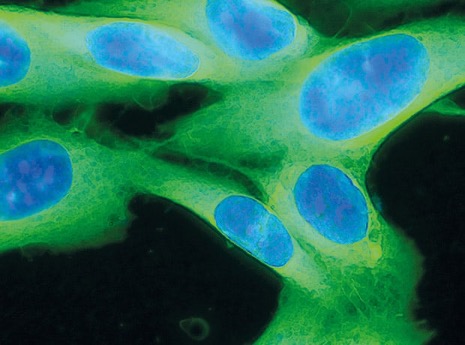Key mechanism controlling bone marrow stem cells could lead to new therapies
April 8, 2024
Source: drugdu
 357
357
 Researchers from King’s College London’s (KCL) Comprehensive Cancer Centre have identified a key mechanism that governs how bone marrow stem cells work, which could potentially lead to new therapeutic pathways.
Researchers from King’s College London’s (KCL) Comprehensive Cancer Centre have identified a key mechanism that governs how bone marrow stem cells work, which could potentially lead to new therapeutic pathways.
The findings from the study will help researchers further understand the key principles involved in stem cell biology and could provide new avenues for the development of efficient stem cell therapeutics.
Researchers identified two molecules, Hoxa9 and b-catenin, that control when bone marrow stem cells rest and recover, as well as when they act and replicate.
Both molecules work together to control a rare population of self-renewing stem cells that are predominantly found in bone marrow, known as haematopoietic stem cells (HSCs).
HSCs are protected from environmental stressors and prevent exhaustion by resting, while inactive HSCs must become active again, replicating themselves by turning into different blood cells, including red blood cells, white blood cells and platelets, to replenish the blood system and respond to problems including infections, blood loss and other complications.
Researchers discovered that this active/inactive characteristic of HSCs plays a key role in bone marrow transplantation, a vital procedure for several diseases, including cancer, as it is critical for cancer stem cells, which sustain the disease and cause relapse.
Researchers suggest that understanding this process will be vital when designing better treatments.
In addition, the team identified a critical enzyme known as PRMT1, which mediates the functions of the two molecules, offering a potential new avenue for the development of efficient stem cell therapeutics.
Eric So, professor and chair in Leukaemia Biology, Comprehensive Cancer Centre, School of Cancer and Pharmaceutical Sciences, KCL and study lead, commented: “Given the critical functions of stem cells in bone marrow transplant and cancer biology, [the] identification of a new druggable pathway not only will help to better understand the stem cell biology but also facilitates the development of more effective therapeutics in the future.”
https://pharmats.com/news/new-study-reveals-mechanism-controlling-bone-marrow-stem-cells-could-lead-to-new-therapies/
By editorRead more on
- Multiple batches of quadrivalent influenza virus split vaccine have been sub-packaged and submitted for lot release approval; expected to be released to the market soon after approval December 12, 2025
- Ab&B Bio-Tech CO., LTD. JS Lyophilized Human Rabies Vaccine Initiates Phase III Clinical Trials December 12, 2025
- The ‘Sweetest’ HPV Vaccine Market is Gone | Haibin Interview December 12, 2025
- InnoCare Pharma announced that its first independently developed next-generation TRK inhibitor, zoletrazinib, has been approved for marketing in China December 12, 2025
- Is PD-1/VEGF dual antibody + ADC becoming the standard configuration? December 12, 2025
your submission has already been received.
OK
Subscribe
Please enter a valid Email address!
Submit
The most relevant industry news & insight will be sent to you every two weeks.



